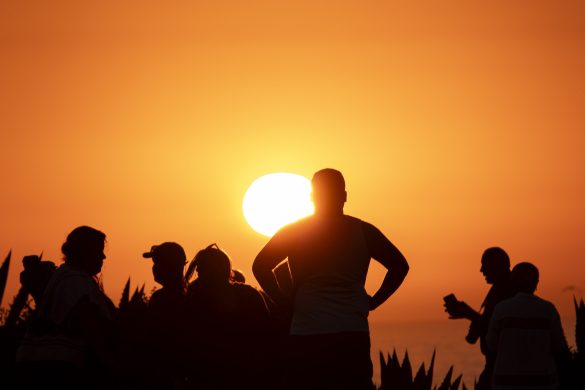I disse dage afholdes der bestyrelsesmøde i den Grønne Klima Fond i østaten Barbados. Fonden står for at distribuere finansielle midler til udviklingslandende til at håndtere klimaforandringerne. Udover at sikre at de lovede midler tilgår fonden, er der tre essentielle punkter bestyrelsen bør være ekstra opmærksomme på under mødet i Barbados.
World Resources Institute- The Green Climate Fund (GCF) has a big role to play. It’s expected to become the world’s main mechanism for securing and distributing finance to help developing nations tackle climate change. The multi-billion dollar question is: Can it live up to this expectation? We may have a clearer answer to that question at the end of the 8th Board meeting of the GCF in Barbados.
This meeting represents a final opportunity to hammer out the GCF’s key operational details before its first official pledging session in November, during which countries will set out their financial commitments to the Fund. So far, countries have committed $2.3 billion to the GCF—far short of the goal of $10 billion that the Fund hopes to deploy over the next few years. The decisions to be made next week could influence how much money countries feel comfortable kicking into the Fund—and whether it meets it fundraising goals.
The following three issues will be among the most important in Barbados:
1. Striking the balance between strict standards and a diverse set of partners.
The Board needs to decide how a wide range of institutions (including development banks, ministries, development agencies, businesses, and others) will become “accredited” to access the Fund’s resources for mitigation and adaptation projects. The standards that the Fund requires of these institutions to meet—both fiduciary standards and environmental and social safeguards—should be commensurate with the types of risks that the Fund will be exposed to through the activities they plan to undertake.
A development bank investing in a major infrastructure project like a wind farm, for example, takes on a very different set of risks than does a ministry working on policy reform or conducting trainings. The Fund must make its resources accessible to a broad range of institutions taking on a diversity of investments, while ensuring that each has the commitment, capacity, and systems in place to appropriately manage the risks.
Board members can balance these two needs by adopting a “fit-for-purpose” accreditation approach, which would differentiate accreditation requirements based on the type and scale of financing that an institution will access, as well as the level of environmental and social risk involved in its planned activities
2. Getting countries and institutions ready for the Green Climate Fund.
The Fund will provide some early financial support to help countries and institutions prepare to access and effectively use the Fund’s resources. This type of finance is referred to as “readiness” support, and includes activities such as strengthening coordination between different ministries and stakeholders on climate change, identifying priority needs for GCF funding and starting to prepare project proposals, and strengthening national institutions to meet the accreditation requirements of the fund.
Readiness support will be critical to ensure that all developing countries, including small island developing states and least developed countries, are firmly in the driver’s seat in pursing their climate-resilient development priorities and accessing funding through their preferred institutions. Next week, the Board will determine how readiness resources will be allocated and delivered to countries.
The Board should empower developing countries to drive this process by ensuring that national authorities have their pick of a wide range of agencies to carry out readiness support—including their own national institutions, such as finance and planning ministries, non-government organizations, or consultancies. In some cases, national institutions closest to the ground may be best-positioned to provide readiness support. The Board should also ensure that adequate resources are set aside to support countries that need readiness most—including vulnerable and lower-capacity countries.
3. Engaging the private sector strategically and appropriately.
The private sector can play an important role in extending the Fund’s reach, thereby increasing the investment flows to climate change solutions. In Barbados, the Fund should send a strong signal that it plans to tap into diverse private sector resources, from commercial banks to big institutional investors like pension funds and sovereign wealth funds, and beyond.
Crucially, the Fund can get the most out of the private sector if it gives its partners the flexibility to deploy a broad range of financial instruments beyond just loans and grants – including risk guarantees, equity investments, and more. This can help ensure that the Fund’s “private sector facility” uses resources as efficiently as possible, maximizing the mitigation and adaptation impact of the Fund’s investments.
Many developing countries are counting on the Fund to deliver meaningful resources by mid to late 2015. But that timeline hinges on whether the Board can resolve the thorny issues described above—among many others—at its upcoming meeting in Barbados. The Board made laudable progress and adopted some important policies at its last meeting; if it can carry forward the spirit of collegiality and common purpose, there’s a good chance that the Barbados meeting will be fruitful.














